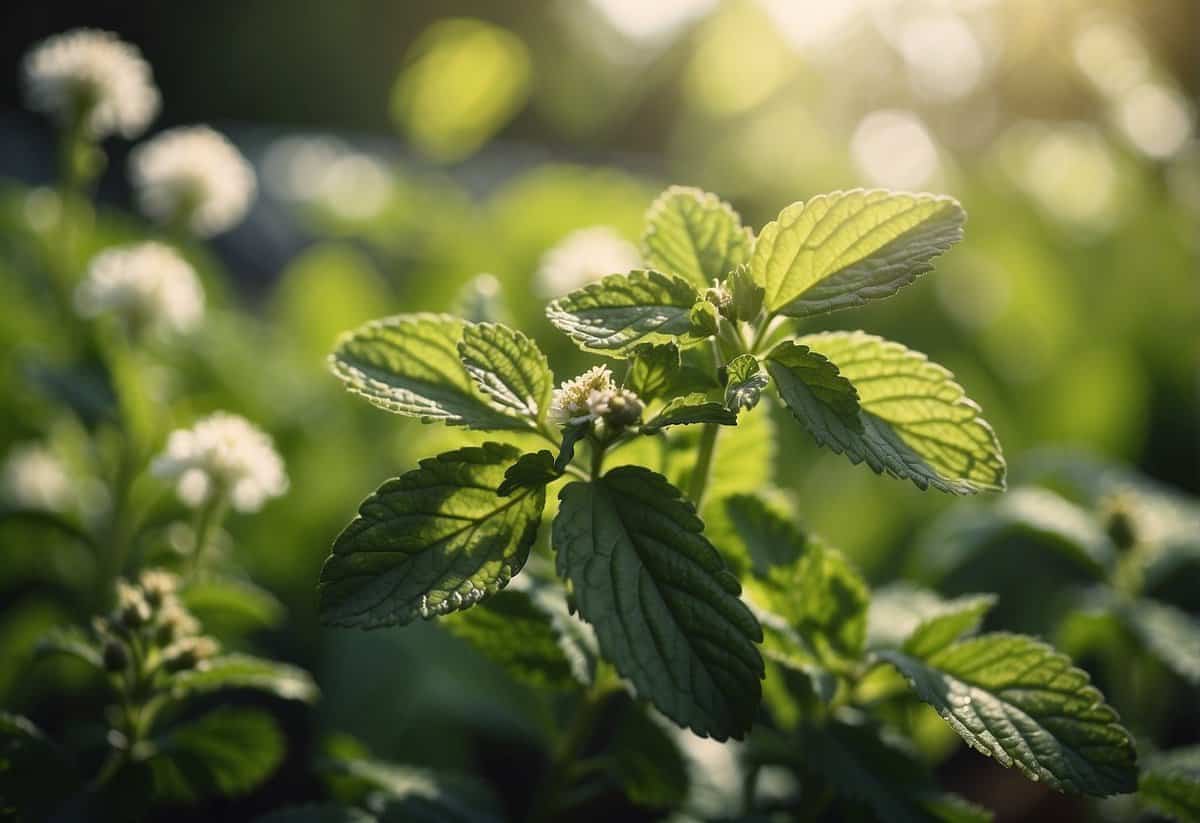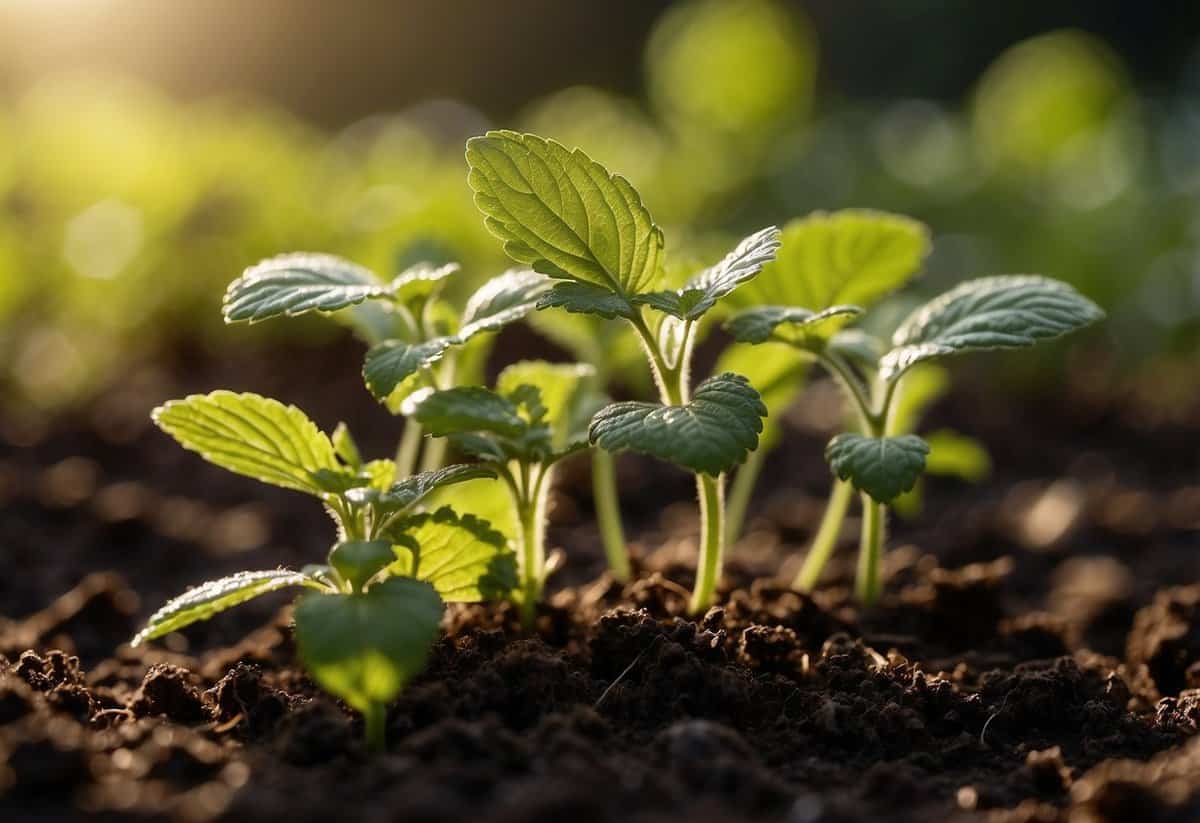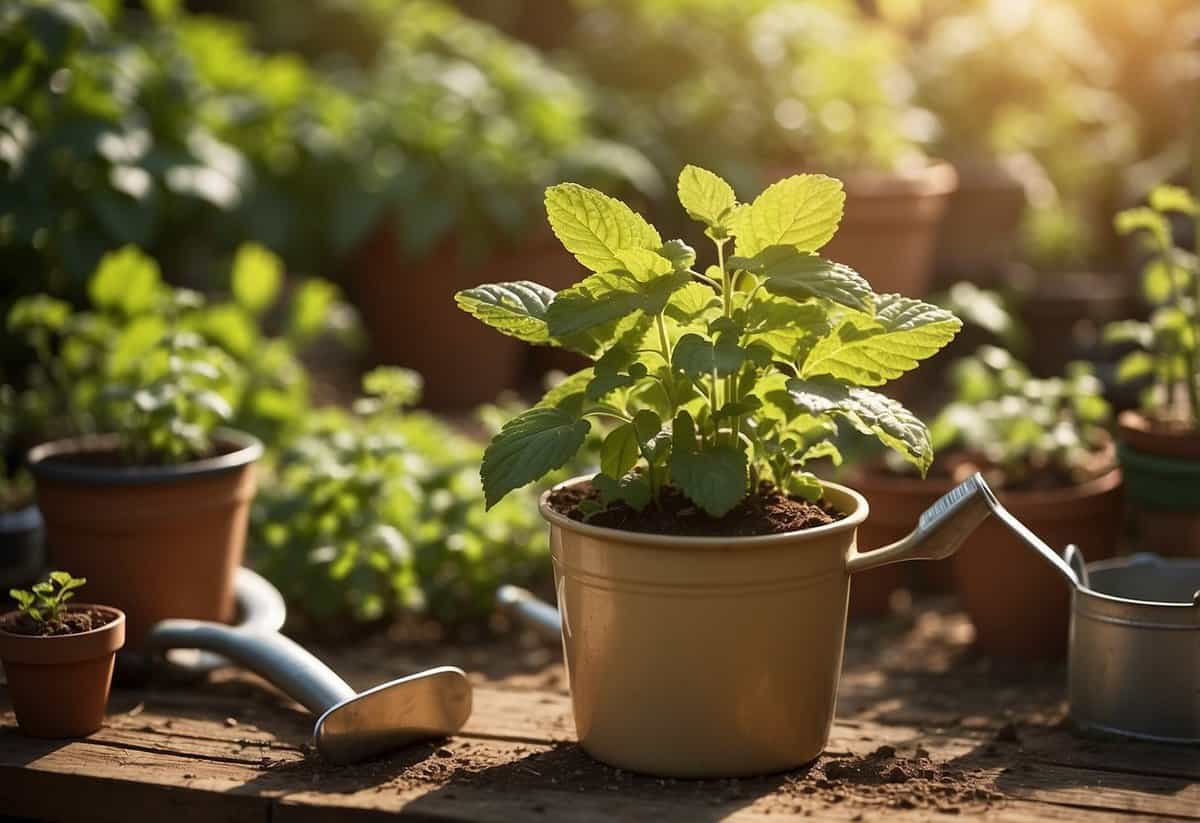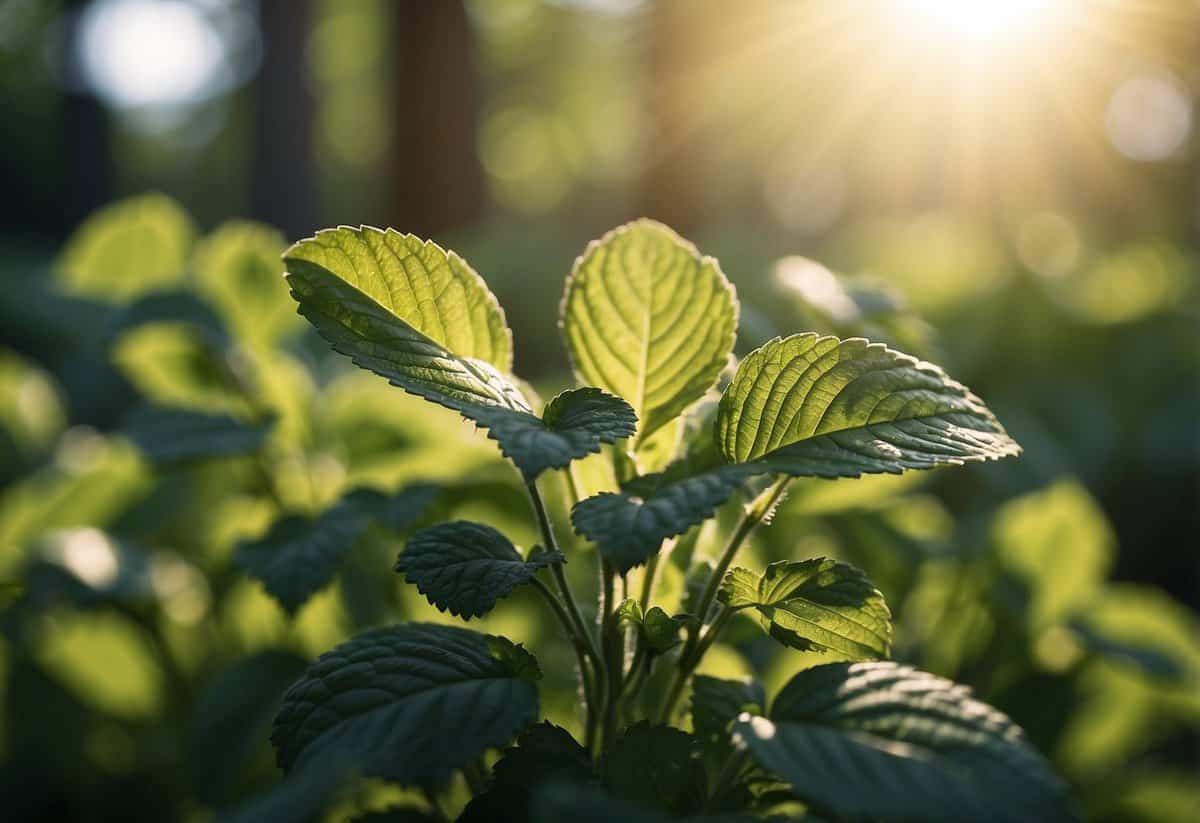Lemon Balm Garden Tips: Easy Steps for a Thriving Herb Patch
Lemon balm is a wonderful addition to any garden, offering a fresh lemony aroma and numerous uses in the kitchen. This versatile herb is perfect for both beginner and seasoned gardeners. With some basic gardening tips, you can grow healthy and vibrant lemon balm plants right in your own backyard.

Curious about how to cultivate this delightful herb and make the most of its benefits? Whether you’re looking to grow lemon balm indoors, outdoors, or in containers, following a few simple guidelines will help you achieve great results. Let’s explore the essential tips to ensure your lemon balm thrives.
1) Choose the Right Location

Lemon balm grows best in well-drained soil rich in organic matter. Aim for a spot with full to partial sun. If you live in a cooler climate, full sun works best. In hotter regions, make sure your lemon balm gets some afternoon shade to avoid harsh sunlight.
If you’re planting in a container, use one that’s at least 12 inches wide and deep. Ensure the container has drainage holes to prevent waterlogging. This encourages healthy root growth and keeps the plant thriving.
2) Start with Quality Soil

To grow healthy lemon balm, begin with quality soil. Look for soil that is rich in organic matter and has good drainage. A good choice is Pro-Mix Premium Organic Soil, which provides the nutrients lemon balm needs to thrive.
The soil should have a pH level between 5.5 and 7.5. You can check the pH level using a simple soil test kit from a garden store. Adding compost can improve soil structure and fertility, helping your lemon balm grow strong and lush.
3) Watering Essentials

Lemon balm needs regular watering to grow well. Keep the soil moist but not waterlogged. Water the plant thoroughly when the top inch of soil feels dry.
Provide consistent moisture, especially during dry periods. If you’re growing lemon balm in containers, ensure they have good drainage to prevent waterlogging.
For best results, water in the morning to allow the soil to dry during the day. This helps prevent root rot and other issues.
4) Prune Regularly

Pruning is key to keeping your lemon balm healthy and productive. Start by trimming any dead or damaged branches with sharp pruning shears.
Next, shape your plant by cutting back overgrown areas. This helps the plant stay compact and look neat.
Early summer is the best time to prune, just before the plant blooms. This encourages more growth and a better harvest. For more detailed steps, check out this pruning guide.
5) Protect from Frost

Lemon balm is sensitive to frost. To keep your plants safe, cover them with a frost blanket or cloth when frost is predicted.
You can also use mulch, like straw or leaves, around the base of the plants to insulate the roots.
For potted lemon balm, bring the containers indoors or move them to a sheltered spot during cold nights.
Find more information on protecting lemon balm from frost.
6) Companion Plants

Lemon balm thrives when planted with certain companions. Melons like watermelons and cantaloupes grow well with lemon balm due to their shared preference for moist, well-drained soil.
Thyme is another excellent companion. The aromatic herb attracts beneficial insects such as bees and hoverflies and can help protect your lemon balm.
Planting rosemary near your lemon balm can repel pests like aphids and slugs, while adding nutrients to the soil.
Lettuce, carrots, radishes, and peas also grow well alongside lemon balm, making your garden more diverse and vibrant.
7) Pest Control Tips

Keep slugs and snails away from your lemon balm plants. They leave behind holes and slime trails on the leaves. Use barriers like copper tape or egg shells around your plants to deter them.
To handle aphids, try a mix of dish soap and water. Spray this solution on the leaves in the morning until the pests are gone.
Ladybugs can also help. They love to eat aphids, so releasing some in your garden can be a natural way to control infestations.
For a more organic method, neem oil is another effective solution for aphids and other pests. Follow the label instructions for best results.
8) Harvest Time

Lemon balm is best harvested in the morning after the dew has dried. This is when the essential oils are at their peak.
Use a pair of clean pruning shears or scissors to cut the stems. Choose healthy, undamaged stems for the best flavor.
For frequent use, pick the leaves before the plant blooms. This ensures a stronger, more vibrant taste.
Refrigerate fresh sprigs in a glass of water covered loosely with a plastic bag to keep them fresh.
For more tips, visit How to Harvest, Store, and Use Lemon Balm.
9) Drying Lemon Balm

Drying lemon balm is easy and helps you preserve the herb for later use. You can use it in teas, cooking, or homemade remedies.
One method is air drying. Tie small bunches of lemon balm with string and hang them upside down in a dark, dry place. This will take several days to a week.
Another option is using a dehydrator. Lay the leaves in a single layer on the drying trays. Set the temperature to the lowest setting and dry them for 12 to 18 hours.
You can also dry lemon balm in the oven. Set the oven to its lowest temperature, spread the leaves on a baking sheet, and dry them for 2 to 4 hours.
Once dried, store the leaves in an airtight container away from light and heat for the best flavor.
For more detailed steps, you can refer to The Homesteading RD’s guide or wikiHow’s instructions.
10) Using Fresh Leaves

You can add fresh lemon balm leaves to salads for a bright, lemony flavor.
Try brewing a refreshing cup of tea by adding 1/4 cup of chopped leaves to a cup of boiling water. Let it steep for 5-10 minutes.
Fresh leaves also work great as a garnish for desserts and drinks.
Fundamentals of Growing Lemon Balm

Growing lemon balm can be simple and enjoyable. With the right location, proper soil, and correct watering practices, you can cultivate a healthy, vibrant plant.
Choosing the Right Location
Lemon balm grows best in a spot that gets plenty of sunlight. Aim for at least five hours of direct sunlight each day. Outdoor gardens or sunny windowsills are ideal. If you’re growing it indoors, place your pot near a south-facing window.
Make sure your chosen spot provides good air circulation to prevent mildew. Lemon balm can tolerate some shade, but less light may result in fewer leaves and a milder aroma. Remember, good light is key for healthy growth and strong flavor.
Soil Preparation and Enrichment
Prepare soil with a mix of garden soil and compost. Lemon balm thrives in well-draining soil that’s rich in organic matter. Work compost or well-rotted manure into the top few inches of soil to provide nutrients.
A pH level between 6.7 and 7.3 is ideal. You can test the pH with a home testing kit. If soil is too acidic or alkaline, adjust it by adding lime or sulfur accordingly. Good soil supports vigorous growth and helps the plant resist pests and diseases.
Watering and Irrigation Tips
Water lemon balm regularly but avoid overwatering. The soil should remain moist, especially during hot or dry spells. Aim to water deeply, allowing water to soak into the root zone.
A simple check: if the top inch of soil feels dry, it’s time to water. Use a watering can or a hose with a gentle spray attachment to prevent soil erosion and plant damage. To retain moisture, you can apply mulch around the base of the plant. Consistent watering ensures lush, green leaves and a healthy plant.
Common Pests and Diseases

Lemon balm plants are mostly hardy but can be affected by certain pests and diseases. Identifying these problems early and using organic methods for control can keep your plants healthy.
Identifying Common Pests
Slugs and Snails: These pests feed on the leaves, leaving irregular holes and a slimy trail. They are more active during cool, damp conditions, making lemon balm a prime target.
Aphids: These small, soft-bodied insects suck the sap from the plants, causing leaves to curl and yellow. You’ll often find them clustered on new growth and the undersides of leaves.
Spider Mites: These tiny pests are hard to see but their presence is noticeable through fine webbing on the leaves. They cause leaves to become speckled and discolored.
Organic Pest Control Methods
To manage pests organically, start with hand-picking. Early morning is the best time to remove slugs and snails. You can also use a mix of water and mild soap to spray off aphids and spider mites.
Another method is barriers. To deter slugs and snails, place copper tape or crushed eggshells around your plants. These materials can act as effective barriers.
Natural predators are also helpful. Encourage ladybugs, which feed on aphids, and other beneficial insects into your garden. You can buy ladybugs online or attract them with plants like dill and fennel.
Preventing and Treating Fungal Diseases
Leaf Spot: This disease causes small dark spots with yellow or brown halos. Remove infected leaves immediately to stop the spread. Avoid overhead watering to reduce moisture on the leaves.
Powdery Mildew: This fungal disease appears as white powdery spots on leaves. Improve air circulation by spacing your plants adequately. Water at the soil level to keep leaves dry.
Proper hygiene is key to preventing diseases. Clean your tools regularly and avoid working in the garden when plants are wet. Using mulch can also help by reducing soil splash onto leaves, thus preventing some fungal infections.
Taking these steps will help you keep your lemon balm plants thriving and healthy all season long.







